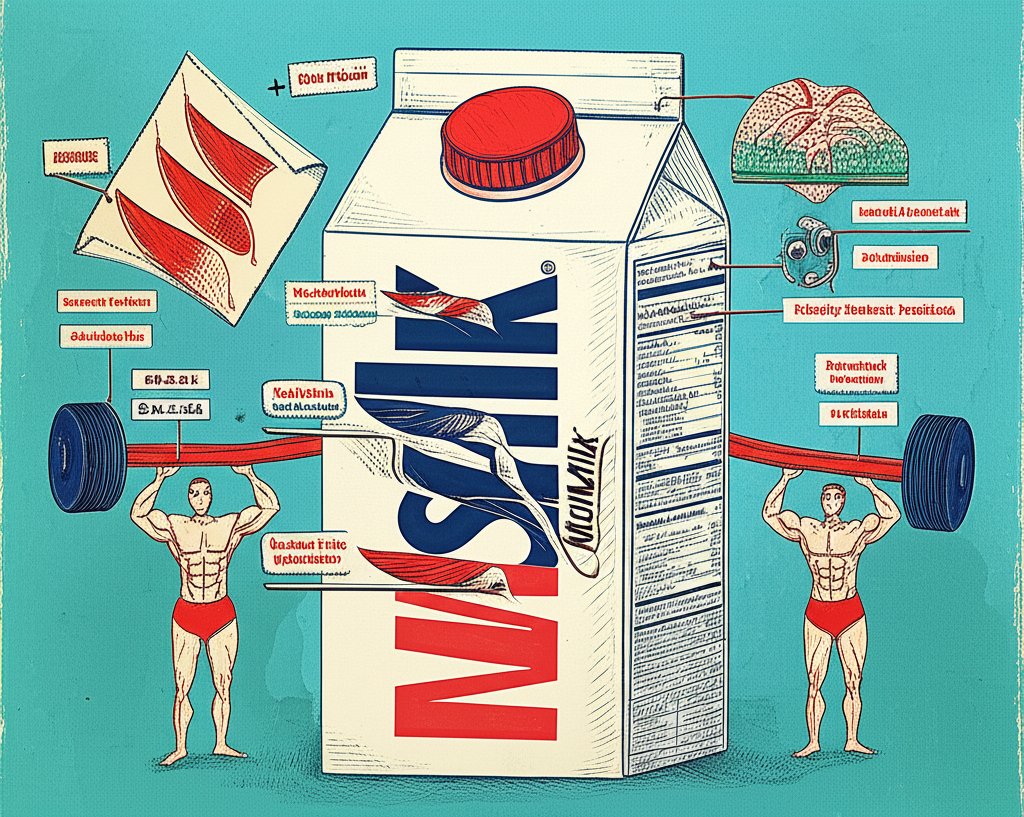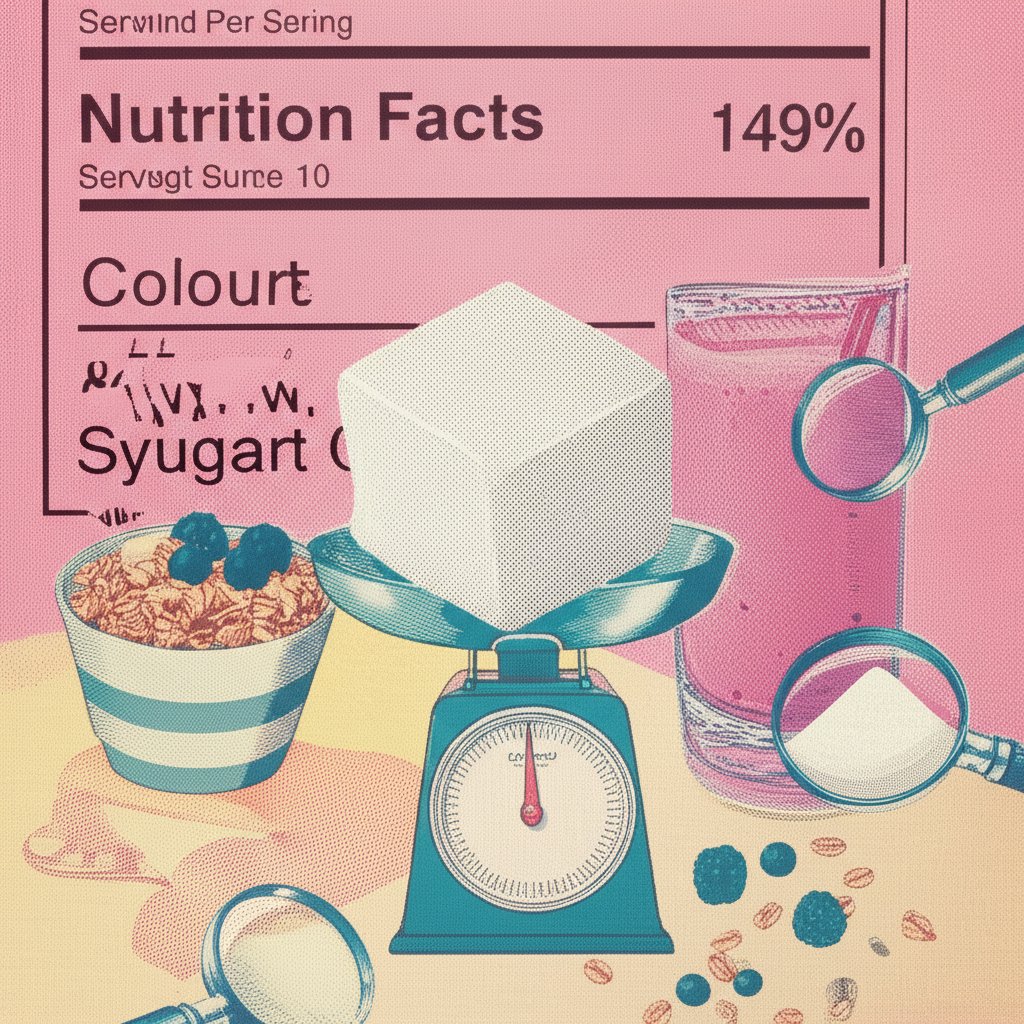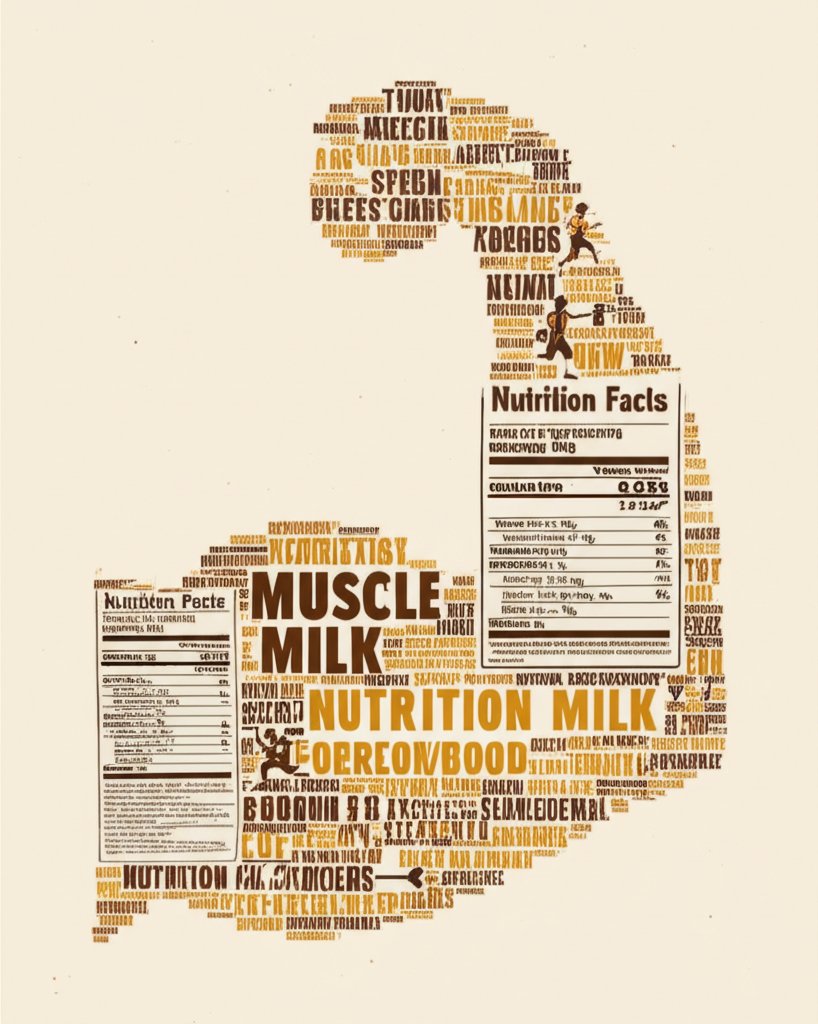Untuk gambaran yang lebih besar dan konteks penuh, pastikan Anda membaca panduan utama kami tentang Mini Cupcake Nutrition Facts: Whats Really In Those Tiny Treats?.
markdown
Ever grabbed a Muscle Milk hoping for a quick protein boost, only to wonder if you’re also gulping down a load of hidden sugars? Understanding the muscle milk nutrition facts is crucial, especially when you’re balancing fitness goals with the occasional sweet treat like a mini cupcake—a seemingly innocent indulgence that can pack a surprising caloric punch.
At a Glance:
- Decode the key macronutrients (protein, carbs, fats) in different Muscle Milk products.
- Identify potential “hidden sugars” and understand their impact on your health.
- Compare Muscle Milk’s nutrition profile against other protein sources to make informed choices.
- Learn how to fit Muscle Milk into your diet without derailing your fitness goals.
- Understand the potential benefits and drawbacks of specific Muscle Milk ingredients.
Decoding the Muscle Milk Label: More Than Just Protein
Muscle Milk positions itself as a convenient protein source, but its nutritional profile goes beyond just protein content. It’s essential to dissect the label fully to understand everything you’re consuming.
A critical first step is understanding that the specific nutrition facts vary significantly across the Muscle Milk product line. A ready-to-drink (RTD) shake will differ from a powder, and different flavors within each line can also vary.
Here’s what to look for:
- Protein: This is the star. Aim for products with a high protein-to-calorie ratio if muscle building or repair is your primary goal.
- Carbohydrates: Note the total carbs, dietary fiber, and sugars. Pay close attention to the source of sugars (e.g., added sugars like sucrose or healthier options like lactose).
- Fats: Check the total fat, saturated fat, and trans fat content. Look for products with a higher proportion of healthy unsaturated fats.
- Calories: Be mindful of the total calorie count, especially if you’re monitoring your intake for weight management.
- Vitamins and Minerals: Muscle Milk is often fortified with vitamins and minerals. Check if it complements your existing supplement regimen.
Example:
Let’s say you’re comparing two Muscle Milk RTD shakes. One contains 25g protein, 15g carbs (5g sugar), and 6g fat, while the other has 30g protein, 25g carbs (15g sugar), and 9g fat. Which is “better”? It depends on your goal. If you’re cutting calories, the first option might be preferable due to the lower carbs and fat. If you need a quick energy boost post-workout, the second option’s higher carb content could be beneficial.
The Sugar Question: Are You Getting a Sweet Surprise?

One of the biggest concerns surrounding protein shakes, including Muscle Milk, is the sugar content. While some sugar is naturally present (e.g., lactose from milk protein), many products contain added sugars.
Here’s how to spot them:
- Check the Ingredients List: Look for ingredients like sucrose, fructose, corn syrup, and other “-ose” sugars. The higher they are on the list, the more prevalent they are in the product.
- Consider “Sugar-Free” Options: Muscle Milk offers sugar-free versions. However, pay attention to the artificial sweeteners used, as some individuals may experience digestive discomfort or have concerns about their long-term health effects. Common sweeteners include sucralose, acesulfame potassium, and stevia.
- Be Aware of “Hidden Sugars”: Ingredients like maltodextrin, often used as a thickener, can also raise blood sugar levels.
Case Snippet:
A fitness enthusiast switched to Muscle Milk as a convenient post-workout protein source. While they saw muscle growth, they also noticed increased cravings and a slight weight gain. Upon closer inspection, they realized the particular Muscle Milk product they were using contained a significant amount of added sugars, contributing to their increased calorie intake and sugar cravings. They then swtiched to a sugar free alternative.
Comparing Muscle Milk to Other Protein Sources: Is It the Best Choice?
Muscle Milk offers convenience, but how does it stack up nutritionally against other protein sources like whole foods and other protein supplements?
Here’s a comparison table:
| Protein Source | Protein per Serving (approx.) | Carbs per Serving (approx.) | Fats per Serving (approx.) | Calories per Serving (approx.) | Cost per Serving (approx.) |
|---|---|---|---|---|---|
| Muscle Milk RTD | 25-30g | 15-25g | 6-9g | 150-200 | $2-3 |
| Whey Protein Powder | 20-25g | 2-5g | 1-3g | 100-150 | $1-2 |
| Greek Yogurt (1 cup) | 20-25g | 5-10g | 0-5g | 120-180 | $1-1.50 |
| Chicken Breast (4oz) | 30-35g | 0g | 3-5g | 150-200 | $1.50-2 |
| Key Takeaways: |
- Cost: Whey protein powder and whole foods like Greek yogurt and chicken breast tend to be more cost-effective per serving.
- Carb Content: Muscle Milk often contains more carbs than whey protein powder or whole food sources.
- Convenience: Muscle Milk excels in convenience, especially the RTD options.
The best choice depends on your individual needs and priorities. If you prioritize convenience and don’t mind the added carbs and cost, Muscle Milk can be a viable option. If you’re on a tight budget or prefer a lower-carb option, whey protein powder or whole foods might be better choices.
Fitting Muscle Milk Into Your Diet: Balancing Act
The key to including Muscle Milk in your diet successfully is moderation and strategic timing. To understand the importance of balancing a protein shake with the rest of your diet, consider how a seemingly small treat can impact your daily intake. You might be surprised by Tiny cupcake ingredients revealed and the amount of calories in it.
Here are some tips:
- Post-Workout: Use Muscle Milk as a post-workout recovery drink to replenish glycogen stores and provide protein for muscle repair.
- Meal Replacement (Occasionally): In a pinch, Muscle Milk can serve as a meal replacement, but prioritize whole foods whenever possible.
- Snack Option: Opt for lower-sugar Muscle Milk options as a snack to curb cravings and increase protein intake.
- Track Your Intake: Monitor your calorie and macronutrient intake to ensure you’re staying within your daily targets.
- Adjust Your Diet: If you’re consuming Muscle Milk regularly, adjust your intake of other foods to maintain a balanced diet.
Pitfall Alert:
Avoid relying solely on Muscle Milk for your protein needs. A diet rich in diverse whole foods provides a wider range of nutrients and health benefits.
Ingredient Deep Dive: Beyond the Macros

Beyond the macronutrients, Muscle Milk contains a variety of other ingredients, some of which may be beneficial, while others may raise concerns.
Common Ingredients and Their Potential Impact:
- Milk Protein Isolate/Concentrate: Provides a complete source of protein.
- Maltodextrin: A carbohydrate used as a thickener and sweetener. Can cause blood sugar spikes in some individuals.
- Sunflower Oil/Canola Oil: Sources of healthy fats.
- Artificial Sweeteners (Sucralose, Acesulfame Potassium): Used in sugar-free versions. Potential concerns about long-term health effects and digestive issues in some individuals.
- Vitamins and Minerals: Fortified to enhance nutritional value.
Action Step:
Research any ingredients you’re unfamiliar with and consider their potential impact on your health based on your individual needs and sensitivities.
Quick Answers: Common Questions About Muscle Milk
Q: Is Muscle Milk good for weight loss?
A: Muscle Milk can be part of a weight loss plan if used strategically. Opt for lower-calorie and lower-sugar options, and factor it into your overall calorie deficit. However, it shouldn’t be the sole focus of your weight loss efforts.
Q: Does Muscle Milk cause bloating?
A: Some individuals may experience bloating due to ingredients like lactose or artificial sweeteners. If you’re sensitive to these ingredients, opt for lactose-free or sugar-free alternatives.
Q: Is Muscle Milk safe for long-term use?
A: Muscle Milk is generally safe for long-term use when consumed in moderation as part of a balanced diet. However, it’s always best to prioritize whole foods and consult with a healthcare professional or registered dietitian for personalized advice.
Q: Can I use Muscle Milk if I’m lactose intolerant?
A: Muscle Milk offers lactose-free options, which may be suitable for individuals with lactose intolerance. Always check the label to confirm the absence of lactose.
Actionable Close: Your Muscle Milk Playbook
Here’s your quick guide to informed Muscle Milk choices:
- Define Your Goal: Are you using Muscle Milk for post-workout recovery, meal replacement, or a snack?
- Read the Label: Pay close attention to protein, carbs, fats, and sugar content.
- Compare Options: Evaluate Muscle Milk against other protein sources based on cost, convenience, and nutritional profile.
- Choose Wisely: Select a Muscle Milk product that aligns with your goals and dietary preferences.
- Track Your Intake: Monitor your calorie and macronutrient intake to maintain a balanced diet.
- Listen to Your Body: Pay attention to how your body responds to Muscle Milk and adjust your intake accordingly.
By understanding the muscle milk nutrition facts and following these steps, you can make informed decisions and incorporate Muscle Milk into your diet in a way that supports your fitness goals.
- The Best Bento Box Price For Your Perfect Packed Lunch - December 15, 2025
- Bento Box Shopping Tips for Smart and Stylish Lunch Prep - December 14, 2025
- Bento Box Trays Streamline Restaurant Meal Presentation and Transport - December 13, 2025










